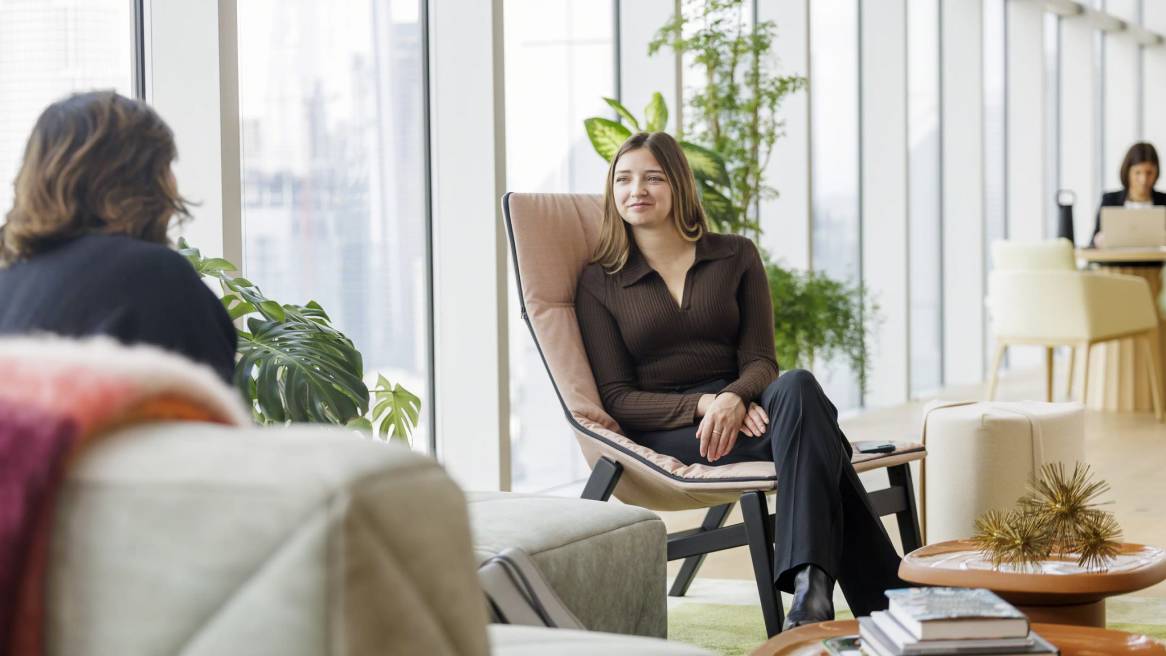Ideas for Redefining Wellbeing
Little CEO Carol Rickard-Brideau, Moderna HR leader Amy Virgilio and Steelcase wellness navigator Gary Strehlke share how culture and space can foster wellbeing in new ways in the workplace.
It’s no secret employee wellbeing, in a post-pandemic world, is suffering. Employees are struggling with stress like never before — four in 10 U.S. employees say their job is negatively impacting their mental health. For many, work is a grind and has even become toxic. At the same time, new Steelcase research revealed that global leaders’ top workplace concern in this coming year will be employee wellbeing.
So why is wellbeing such a big deal now, and how do leaders prioritize employees physical, emotional and cognitive health?
In our recent Work Better webinar, host Katie Pace, director of communications at Steelcase, spoke with three leading voices to better understand how wellbeing is being redefined in today’s workplace.
Panelists:
- Carol Rickard-Brideau, Partner + CEO, Little Diversified Architectural Consulting
- Amy Virgilio, Director, Human Resources, Moderna
- Gary Strehlke, Wellbeing Navigator, Steelcase
Katie Pace: A question for all panelists – how do you define wellbeing today?
CRB: Wellbeing isn’t the absence of disease. It’s really creating conditions that allow people to function at their highest possible levels.
AV: As an HR business partner, wellbeing is empowering our employees with the tools and resources to make sure not only that they can bring their best selves to work, but have the full, holistic gamut of physical and mental wellbeing support that they may need.
GS: Traditionally companies have focused on physical wellbeing, like preventing illness – but we’re now broadening those dimensions to incorporate physical, emotional, cognitive, spiritual, financial – anything that may impact an employee’s ability to function and be well. Maintaining a healthy level of function across multi dimensions of health would be how I define wellbeing today.
KP: This past spring, results from our latest study of global leaders revealed something we found quite surprising – that their top workplace concern in the coming year will be employee wellbeing. A lot of people might be wondering, why have leaders elevated the issue of wellbeing to the top of their list now?
KP: Amy, let’s start with you – what’s happened to cause leaders to prioritize wellbeing in the workplace?
AV: People are the heart of our company, and they’re the ones working on our promise to deliver mRNA medicines to patients. We grew quickly during the pandemic – going from about 500 Massachusetts-based employees to almost 5,000 global employees in 20 different countries. The cost of hiring new employees – training and onboarding time – is critical to our business and our mission. If we don’t put our employees and their evolving needs at the forefront, we’re going to miss out. Retention is a key factor in our ability to deliver medicines, and that will continue to be significant. Top of mind for our leadership teams is how our employees are doing. We are transparent in that we expect a lot of our employees, performance-wise, and making sure we have the tools, benefits, and ensuring that we’re constantly listening to their needs is key to our success in the future.
KP: Gary, why do you think wellbeing has moved to the top of leaders’ priorities?
GS: I think it’s important to recognize that employees are really a company’s only renewable resource. Employees are impacted by things happening in the workplace – both positive and negative – and things happening outside – things in their personal lives and globally. When you boil it down, it’s a human person performing a task. So often, we think of the tasks themselves, but we lose sight of the employee. Are they coming to work physically, emotionally and cognitively healthy? Can they function socially with their leaders and coworkers so they can continue to perform at a high level? We must be cautious as a company to make sure we’re not doing things that make our employees less healthy, and at the same time look at how we can enhance the health of our employee population.
KP: Gallup research has revealed people don’t believe their organization cares about their wellbeing. Yet leaders are telling us it’s their top priority? Carol, what do you think is causing this disconnect?
CRB: Nothing will sharpen your focus when it comes to health and wellbeing like a pandemic. In fact, we’re still seeing signs of PTSD from the pandemic. All our patterns were disrupted. We got used to cocooning, when we really needed to expand our interactions. Even though things are slowly returning to normal and COVID is at bay, we’re still kind of cocooning and that’s not a healthy thing for us because humans are really wired to connect. Businesses want to get their people back in the office, which sounds self-serving. To an employee, they may think the reason is just so their boss can keep a closer eye on them, or they may feel more pressure to perform and be present in the office. But companies also want to create culture. You can create culture virtually, but it’s harder – you can read body language when you’re in-person, you can see if someone’s not responding well to something that’s being discussed. Those are things you can’t do in a virtual meeting. So I think for a lot of employees, it may seem like control. However, many companies want to foster a relationship between teammates and between the company and the employee. Companies want that positive, productive culture and they feel like they’ll get that if people are in person where they can create ties to one another, as well as the company.
KP: We know our environment can have a profound impact on our wellbeing. What can be done in the built environment to have a positive impact on human health? Carol, you have studied this topic as a designer for many years – what have you learned?
CRB: Over the years I’ve created a mnemonic device for wellness: ABCD. ‘A’ stands for active design. ‘B’ stands for biophilia. ‘C’ stands for community and ‘D’ stands for daylight.
A: Active Design
We all know exercise is good for your body. We also know through other research that exercise is great for neuron growth in the part of your brain that deals with memory and cognition. Being sedentary all day long leads to body responses that can create a foundation for long term chronic disease. Making it easier for people to change postures, take advantage of alternate work settings – like sit-stand desks that combat the negative effects of sitting in one place for too long – are all good things. There’s another feature of ‘A’ that I’ll call awe. Awe is one of those things that when you walk into a space, you feel like you’re part of something bigger. That’s important, too. We know studies have shown that the more people feel awe in a space, the more it activates their curiosity, which in turn helps them perform better.
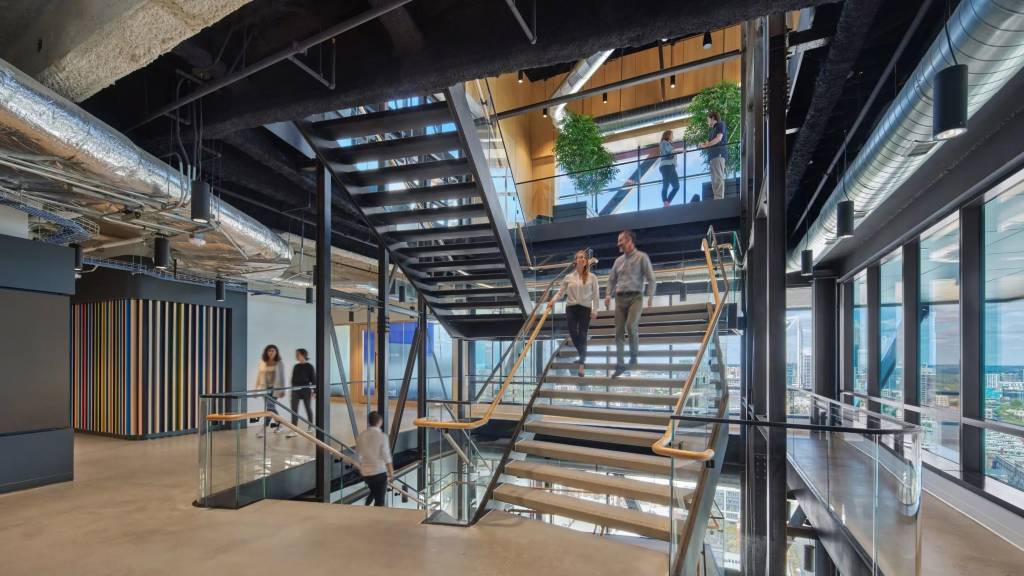
B: Biophilia
Another way to lower stress and blood pressure and restore both mental and physical energy is to be exposed to nature. Biophilia literally means the love of nature. Even a five-minute exposure to nature or nature analog – a natural material – makes our cortisol levels drop, our blood pressure drop. If you are feeling stressed or you’re stuck on something, go outside for a five-minute walk in a natural setting – you’ll feel a little bit better afterward – for good reason.
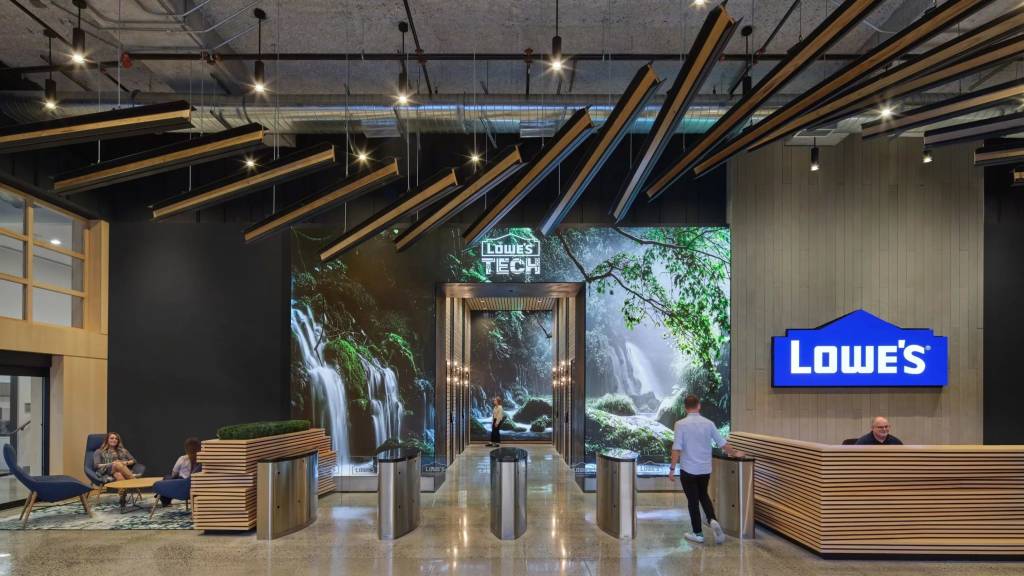
C: Community
Anxiety and depression have always been a part of society, but during the pandemic they became much worse. Human connection really lies at the heart of human wellbeing. From the moment we’re born, one way we measure success in life is by our social connections – having a network of friends, being close to family, etc. We’re wired to connect. We seek belonging and attachment to feel worthy and feel loved. Loneliness has the same neural signature that going without food does. So, creating environments that allow people to engage in an activity or that allow them to be exposed to things going on around them, help us make connections and not feel so lonely.
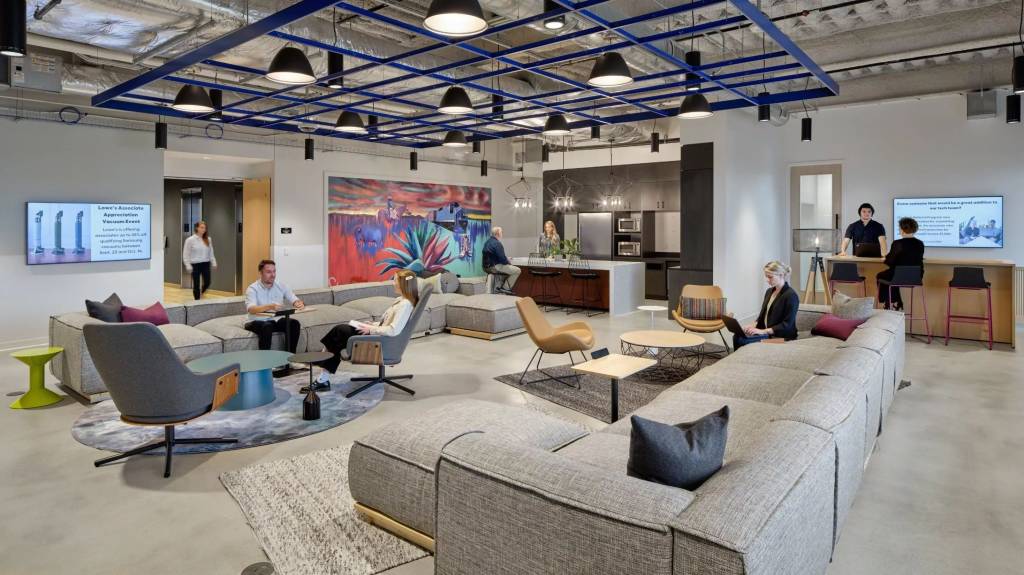
D: Daylight
Each of our major organs has a clock that’s regulated by a master clock in our brain – the suprachiasmatic nucleus (SCN). That master clock creates a circadian rhythm and it regulates all of our body systems. Our blood pressure rises and falls during certain times of the day, hormones rise and fall – all of these are automatic functions we don’t think about. And they’re all regulated by daylight. It comes from when we were hunter-gatherers and most of what we did was during daylight hours when the sun illuminated our world. The lightbulb is a relatively new invention, so for most of our history our activities were regulated by the sun. Because of that, our bodies still run by where the sun is during the day. Morning light is blue in color, so your SCN reads this and gives you a shot of cortisol – wakes you up and sends you on your day. Evening light is yellow in color, so your SCN reads that and gives you shot of melatonin to prepare you for a night of sleep and restoration. When we’re in rooms that don’t have a lot of natural daylight, our bodies are searching for those cues and they’re not getting them. Making sure we’re washing daylight as deeply into space as we can becomes important to make sure that everyone has daylight equity.
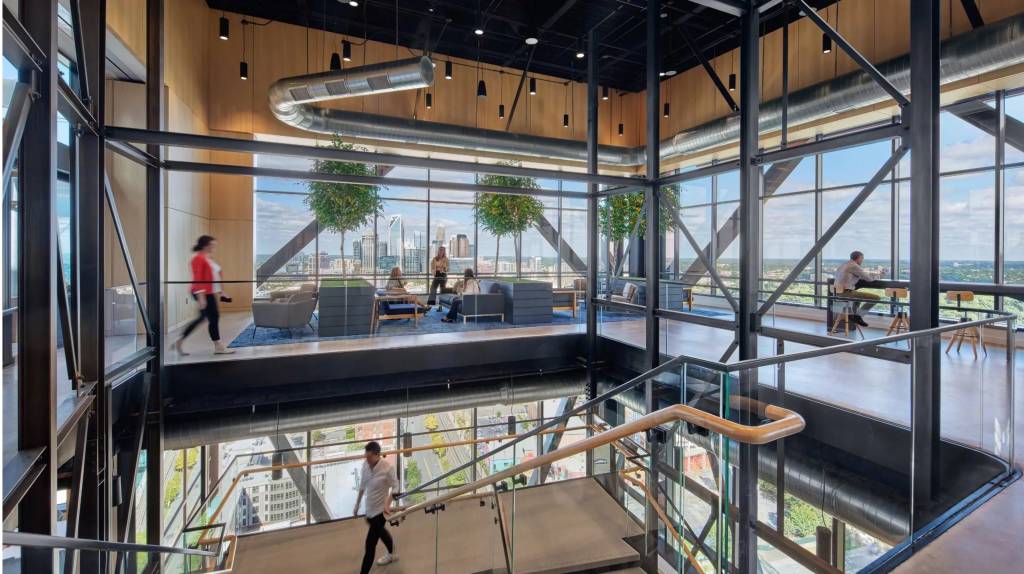
KP: Amy, Moderna has been doing some piloting work with spaces – can you tell us about them and what you’ve learned.
AV: We’ve had an interesting problem over the pandemic – with our mission to get the Covid vaccine to patients around the world, we’ve hired amazing talent, and in fact, more people than fit back into our spaces. We have a lot of different personas of employees at Moderna. Our researchers, scientists and manufacturing teams never left the office during the pandemic, but those of us in corporate functions did have the flexibility to work from home. As we think about returning to work, we do believe in an in-person culture – collaboration, mentorship and innovation being some of the benefits that come with being in-person. But we knew this would be a big exercise in change management – getting people to adjust to having colleagues working next to each other and having shared spaces and desks. It’s quite a mission to think about how we fit into our new spaces, and what’s important to each employee and team now. For us, the key aspect was allowing employees to have a voice when going on this change journey and bringing people along and letting them know we do care about their wellbeing, productivity and experience in the office.
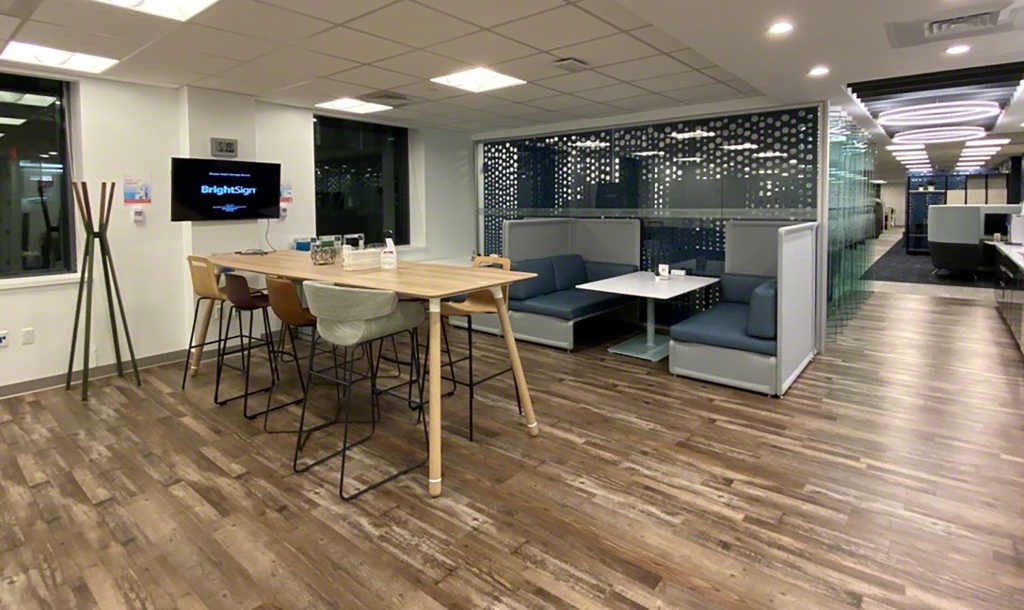
We really were trying to understand what are the preferences and focus areas of individuals and teams and what are the communal spaces and how will those be used? Our researchers and scientists prefer the focus lounges and shielded focus areas that allowed them to do heads-down work and signal when they were busy. Whereas a lot of the personas in our corporate groups appreciated the collaboration spaces for touchdowns in between meetings.
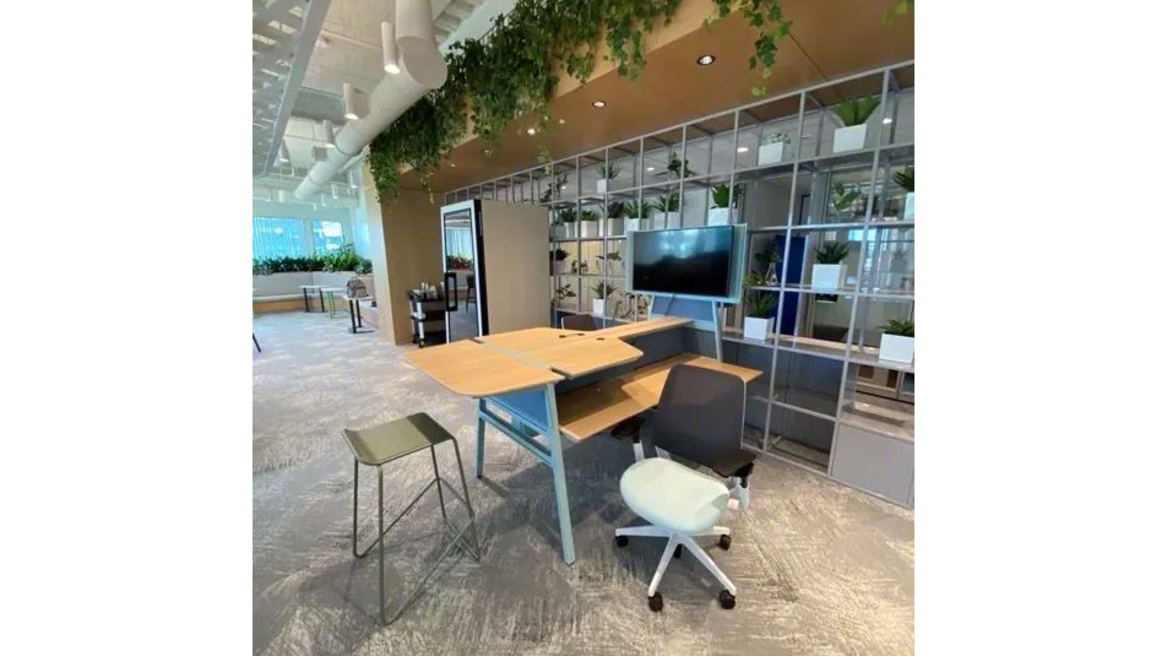
KP: Gary, at Steelcase we’ve created a destination at our Grand Rapids campus that we call a wellbeing hub. Can you talk about how you’re using that space to support employee wellbeing?
GS: One of the things companies can do to demonstrate that the wellbeing of their employees matters is to invest in space. One of the ways we’ve invested in space at Steelcase are our three physical wellbeing hubs: one in our global business center, as well as a couple in our manufacturing facilities. While most companies invest in wellbeing vendors, resources and benefits that exist somewhere in the cyber world or in a benefits manual, we really love this idea of investing in a physical space. It’s a space designed around helping employees improve engagement with all our wellbeing resources. You can think of the space as a toolbox, and within that space we have all the physical manifestations of our wellbeing-related benefits. For example, we have a nurse that sits in the space who can do biometrics or answer health questions or just talk to an employee about their newborn baby and why the baby isn’t sleeping well. Our nurse helps a lot of employees find a suitable doctor. We have a self-serve area where they can measure their BMI or get their own cold medicine. We have scales, blood pressure machine and biometrics. We have a massage studio where people can get three types of massage. We have a respite room where people can pray or find respite. We have a nap station where people can get a little sleep, if needed. We have a classroom where we can help educate people about their health. In addition, any of our wellbeing vendors can come into the space and meet with our employees. We realized that when most people must telephone a nurse or go online and search for answers or help, they won’t do it. In this space, you can walk through and talk to a nurse working in our space. At first, most people just walk through with their heads down. Then, on a second trip, they may nod and say, “Hi.” Maybe it’s on the 38th trip through the wellbeing hub that a passerby mentions a health issue and that starts this ball rolling in helping that person deal with an issue that may be concerning them or holding them back physically or mentally. This is an experience you just don’t get with a telephonic nurse. This is something you only get with that physical connection and those familiar relationships that develop over time. Because of this interaction, utilization with all of our vendors has significantly increased since we established this space.
KP: Let’s talk about the role of leaders and what they need to be able to support employee wellbeing. Amy, can you tell us about how Moderna’s Manager Academy prepares leaders.
AV: In supporting leaders, it’s about coaching, leading by example and listening. For example, we did a total reward and benefits survey last year where we wanted to understand what was important to our employees. We were hearing that employees weren’t using their vacations, and if they were, they weren’t really unplugging. That’s not good long-term, as we want our employees to rest and recharge, so they can bring their best selves to the work they do. Through listening, we found that it wasn’t fear of taking a vacation or approval, but it was because of the value and commitment to the work and their teammates. What we did was implement three global recharge days where we actively encourage all employees who can, to take the day off for themselves – they know that they won’t come back to a ton of emails or work that piled up while they were gone. They can feel like they can turn off for the day. Creating that dialogue to make it normal and encourage them to step away, and we’re doing it together – that’s leading by example. That folds into our leadership academies and empowering our managers and leaders to talk about feedback, performance, retention, and how we can care for our employees. How do we make them feel empowered? It’s not just about coaching but making sure our leaders know what resources are available to our employees and making sure we’re creating access to them. We all own that message and communication.
KATIE: Gary, I’ve heard you talk about the lifecycle of wellbeing. Can you tell us what this means and how it’s helping you better support employees.
GS: No employee is healthy all the time. It’s just impossible. You could be very healthy physically and emotionally, and some life adversity hits and you’re not healthy anymore. We look at employee wellbeing through three stages: prevention, support and recovery. Prevention revolves around keeping people healthy – do they exercise, are they eating healthy, are they taking mental health breaks. Support is for those employees that are already dealing with something that affects them in a negative way – whether it’s relationship problems or a divorce, or a cancer diagnosis. Maybe it’s connecting them with specialists or therapists. Then with recovery, that’s a person who’s gone through adversity. Can we get them plugged into resources that can help them recover to the point so that they can get back to a pre-adversity level of functioning and become a full member of our team again? Those are the three phases we look at – and anyone can find themselves in one of these places, at any given time.
KATIE: Research tells us Gen Z, which will be the largest generation in the workplace soon, prioritizes their own wellbeing and expects the same from the company more than anyone else. Carol, what impact have you seen GenZ make in the workplace when it comes to wellbeing?
CRB: They are very tuned into it. In fact, we have clients who’ve pursued WELL Building Certification as a recruiting tool. If their talent manager can walk a prospect through a space and say they’ve designed this entire building to help make you happier, healthier, more productive and help you in your work, versus someone who can’t say that – it makes a real difference in recruiting and a real difference to retaining those who work there.
KP: Amy, what are you seeing on the ground floor of HR?
AV: I want to take a different approach and ensure we look at it through the lens of life stages and where someone may be in their career and life journey and how we (and benefit offerings) can have an impact on that. When we think about our interns and entry-level employees, we think about the support they need in terms of coaching and mentoring. I think of one of our newest employee relations groups – mCARE (Moderna Caregiver and Resource Empowerment) that is a network to support caregivers and care recipients, providing a resource to empower, for example, those employees who may be trying to take care of aging parents – or children perhaps – really understanding that full picture of what our people might be living outside of work is really important.

Carol Rickard-Brideau is a partner and CEO of Little in Washington, D.C. She is a registered architect with more than 40 years of experience and describes herself as a WELL Building and Regenerative Design geek.

Amy Virgilio is a director of human resources at Moderna in Cambridge, Massachusetts. She is passionate about creating great employee experiences that allow employees to bring their best selves to work by partnering with leadership and putting the focus on the people that make companies and cultures successful.

Gary Strehlke, who is a wellbeing navigator at Steelcase here in Grand Rapids. He assists with improving all dimensions of employees’ wellbeing by connecting them with services to improve aspects of their physical, emotional and social health.
Redefining Wellbeing
Watch our panel of experts from Little, Moderna and Steelcase discuss how they’re redefining wellbeing, and learn new insights about helping people be happier and healthier at work.
Watch Now
Our webinar audience answered several poll questions during the live webinar, and here are the results.
How would you identify your role?
52% Architect or Designer
22% Other
13% Real Estate/Facilities
9% Leader
4% Human Resources
How important is wellbeing to your organization?
68% Very Important
26% Somewhat Important
5% Not Very Important
0% Not Important At All
What are the barriers that are preventing your company from prioritizing wellbeing?
37% Budget and/or Resources
30% My company is prioritizing wellbeing
26% Lack of knowledge/Understanding
7% My company does not think wellbeing is a priority
Is your company investing in workplace enhancements to support wellbeing?
39% Yes, it’s a priority, and we have some active projects
37% Somewhat, investing minimally in space
14%, No, we are not considering the impact of space
11% Yes, it’s a strategic priority, with large investment

